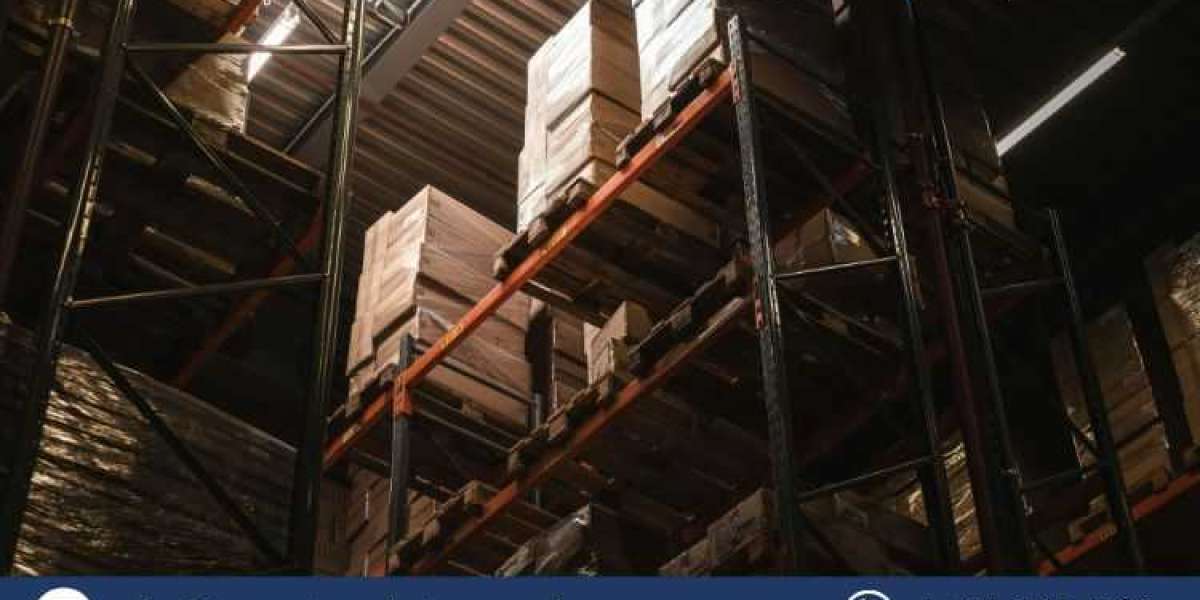Saudi Arabia's warehousing and storage market is experiencing rapid growth, driven by rising e-commerce activities, industrial expansion, and government investments in logistics infrastructure. The country is positioning itself as a key logistics hub in the Middle East, supported by its Vision 2030 strategy, which focuses on economic diversification and enhanced trade connectivity.
In 2024, the Saudi Arabia warehousing and storage market size was valued at USD 7.10 billion, and it is projected to grow at a CAGR of 5.9% from 2025 to 2034, reaching approximately USD 12.05 billion by 2034.
This blog explores the market dynamics, key drivers, challenges, trends, and future opportunities shaping Saudi Arabia’s warehousing and storage industry.
Market Overview
Warehousing and storage facilities play a crucial role in supply chain management, logistics, and distribution. These facilities store raw materials, finished goods, and perishable products, ensuring efficient inventory management and faster delivery cycles.
Key factors shaping the market include:
- Rising demand for e-commerce fulfillment centers
- Growing investments in smart warehousing and automation
- Expansion of industrial zones and logistics parks
- Government initiatives to boost trade and supply chain efficiency
With a strategic location connecting Asia, Europe, and Africa, Saudi Arabia is strengthening its position as a leading logistics hub in the Middle East.
Key Market Drivers
Several factors are fueling the growth of the Saudi Arabia warehousing and storage market:
1. Growth of E-Commerce and Online Retail
The e-commerce boom in Saudi Arabia is driving demand for fulfillment centers, last-mile delivery hubs, and distribution warehouses. Retailers and logistics providers are expanding their warehouse networks to meet consumer expectations for fast and efficient deliveries.
2. Expansion of Industrial and Free Trade Zones
The Saudi government is developing industrial zones, special economic zones (SEZs), and logistics hubs to attract investments. Projects such as King Abdullah Economic City (KAEC) and NEOM support industrial growth and create demand for modern warehousing solutions.
3. Rising Demand for Temperature-Controlled Warehousing
The demand for cold storage facilities is increasing due to the growth of the food beverage, pharmaceutical, and biotechnology industries. Saudi Arabia is investing in refrigerated warehouses and temperature-controlled logistics solutions to ensure product safety and compliance with storage standards.
4. Infrastructure Development and Smart Logistics Initiatives
Saudi Arabia is modernizing its transportation and logistics infrastructure, improving road networks, railway freight services, and port connectivity. Initiatives like the National Industrial Development and Logistics Program (NIDLP) are enhancing supply chain efficiency and warehouse operations.
5. Increasing Adoption of Smart Warehousing and Automation
Businesses are adopting robotics, artificial intelligence (AI), and IoT-based warehouse management systems (WMS) to improve inventory accuracy, reduce human errors, and enhance warehouse productivity.
6. Government Policies Supporting Trade and Logistics
The Saudi Vision 2030 initiative aims to diversify the economy, boost trade, and position Saudi Arabia as a regional logistics hub. The government is investing in warehousing infrastructure and promoting digital supply chain transformation.
Market Challenges
Despite its strong growth, the warehousing and storage industry in Saudi Arabia faces several challenges:
1. High Initial Investment Costs for Modern Warehouses
Developing advanced warehousing infrastructure, including automated storage systems and temperature-controlled warehouses, requires significant capital investment, which may limit small and medium-sized enterprises (SMEs) from expanding their storage facilities.
2. Limited Availability of Skilled Workforce in Logistics
The logistics sector faces a shortage of skilled professionals in warehouse management, automation technologies, and supply chain optimization. Businesses must invest in training programs to upskill their workforce.
3. Infrastructure Bottlenecks and Supply Chain Disruptions
Despite infrastructure development, delays in customs clearance, inefficient cargo handling, and high transportation costs affect supply chain efficiency. Improving logistics coordination and warehouse accessibility is essential for long-term growth.
4. Regulatory Compliance and Storage Standards
Companies must comply with safety regulations, temperature control requirements, and inventory tracking policies, particularly for pharmaceutical, food, and hazardous material storage. Meeting these standards requires continuous investment in monitoring and compliance technologies.
5. Rising Competition from Regional Logistics Hubs
Countries like the UAE and Qatar are investing heavily in logistics infrastructure, free trade zones, and smart warehouses, posing competition for Saudi Arabia’s logistics market. Strategic partnerships and innovative warehouse solutions are crucial to staying competitive.
Key Market Trends
Several emerging trends are shaping the Saudi Arabia warehousing and storage industry:
1. Growth of Smart Warehouses and Robotics Integration
Businesses are implementing AI-powered warehouse management systems (WMS), automated guided vehicles (AGVs), and robotic picking systems to enhance storage efficiency and order fulfillment speed.
2. Expansion of Cold Storage and Pharmaceutical Warehousing
With the growth of healthcare, biotechnology, and food industries, the demand for temperature-controlled logistics and cold storage solutions is rising. Companies are investing in refrigerated warehouses and real-time monitoring systems to ensure product integrity.
3. Rise of Omni-Channel Retail and Last-Mile Delivery Hubs
Retailers are adopting omni-channel fulfillment strategies, integrating warehouses with online and offline sales channels. Last-mile delivery hubs and urban distribution centers are growing to support fast e-commerce deliveries.
4. Increased Use of Cloud-Based Warehouse Management Systems (WMS)
Cloud-based WMS platforms provide real-time inventory tracking, predictive analytics, and automated stock replenishment. Businesses are leveraging cloud technology to optimize warehouse operations.
5. Expansion of Free Trade and Logistics Hubs
Saudi Arabia is developing free trade zones and bonded warehouses to support import-export trade, reduce customs delays, and enhance supply chain efficiency.
6. Sustainability and Green Warehousing Solutions
Companies are adopting solar-powered warehouses, energy-efficient storage systems, and sustainable packaging solutions to reduce carbon footprints and meet environmental sustainability goals.
Market Segmentation
The Saudi Arabia warehousing and storage market is segmented based on type, end-use industry, and region.
1. By Type
- General Warehousing – Storage for consumer goods, electronics, and retail products.
- Cold Storage Warehousing – Refrigerated facilities for food, pharmaceuticals, and biotechnology.
- Automated and Smart Warehousing – AI-powered storage and robotics-enabled warehouses.
- Bonded Warehousing – Secure storage facilities for international trade and duty-free goods.
2. By End-Use Industry
- E-Commerce and Retail – Warehouses for order fulfillment and last-mile delivery.
- Pharmaceuticals and Healthcare – Temperature-controlled storage for medicines and vaccines.
- Food Beverage – Refrigerated and dry storage for perishable goods.
- Manufacturing and Industrial – Warehouses for raw materials and finished products.
3. By Region
- Riyadh – Major logistics and warehousing hub.
- Jeddah – Key port city with expanding free trade zones.
- Dammam – Industrial and logistics hub in the Eastern Province.
- Mecca Medina – Warehousing demand driven by tourism and retail.
Future Outlook (2025-2034)
The Saudi Arabia warehousing and storage industry will continue evolving with advancements in automation, digital logistics, and sustainable storage solutions. Key developments expected in the coming years include:
- Increased investment in AI-powered warehouse automation and robotics.
- Expansion of cold storage and pharmaceutical warehousing infrastructure.
- Development of integrated smart logistics parks and distribution centers.
- Greater adoption of cloud-based WMS for real-time inventory management.
- Sustainability-driven investments in eco-friendly warehouses and green supply chains.
With rising demand for efficient storage, enhanced supply chain capabilities, and government-backed infrastructure projects, Saudi Arabia’s warehousing and storage market is set to play a critical role in economic diversification and trade expansion.







